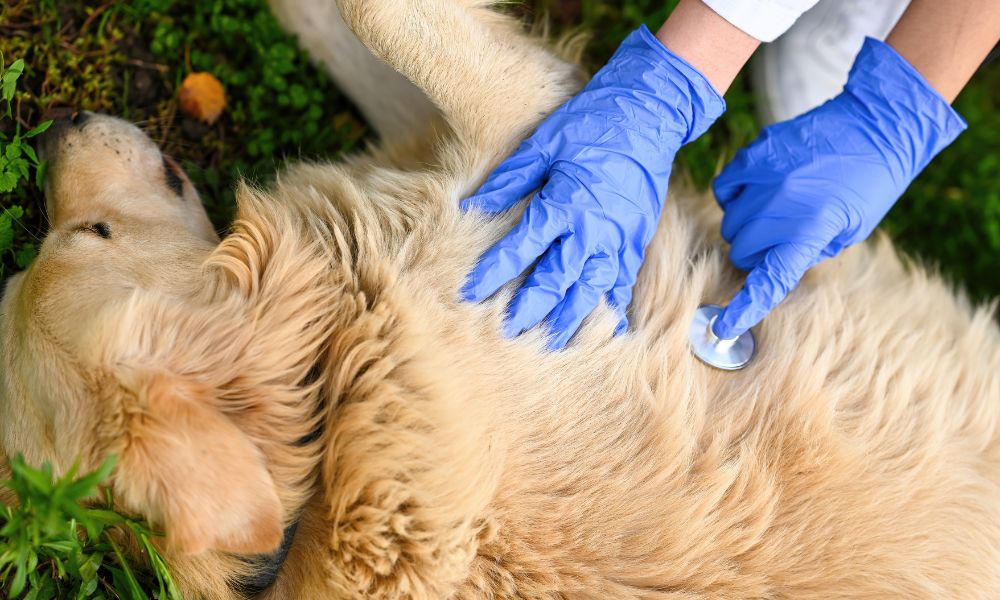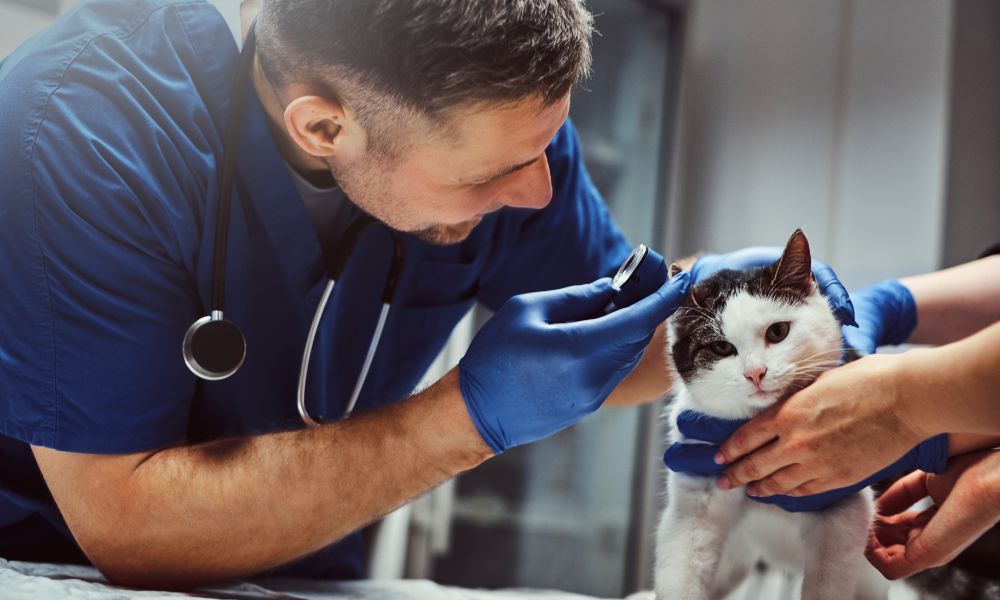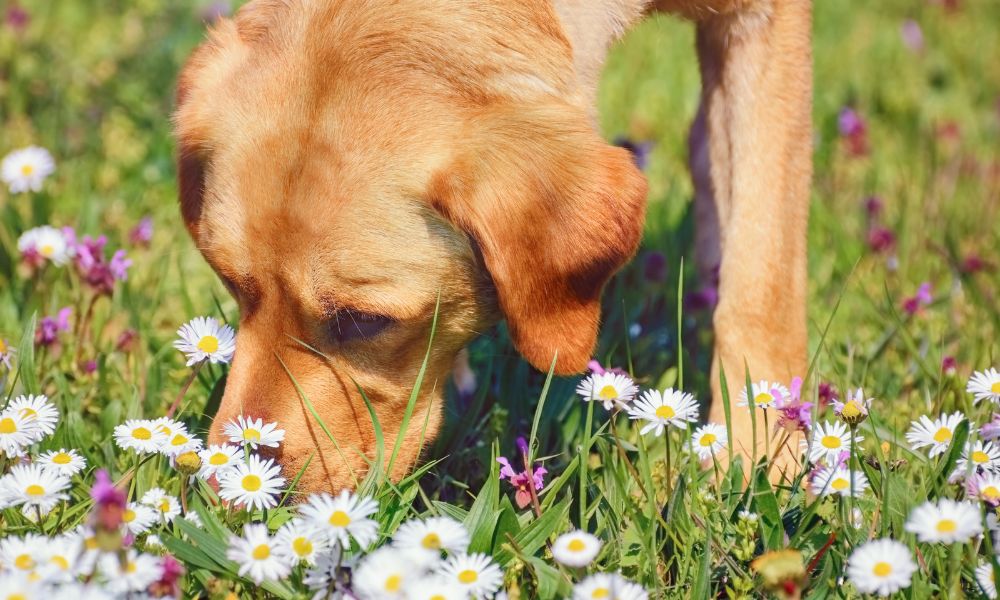
Be prepared: A guide to pet first aid and wellbeing
April is Pet First Aid Awareness Month, which is why this week we’re taking a look at what you can do to be make sure that your pet’s health and wellbeing are well looked after. Whether that is by being prepared for emergencies, preventing diseases or looking at ways to provide enrichment or mental stimulation that promote their psychological and emotional health too.
Just like humans, pets can experience accidents or medical emergencies that require immediate attention. That's why having knowledge of pet first aid is invaluable. In this guide, we'll cover essential tips and techniques to help you become better prepared to handle emergencies involving your beloved pets.

-
Educate yourself
Before an emergency occurs, take the time to educate yourself on common pet injuries and illnesses, as well as basic first aid techniques. Consider taking a pet first aid course offered by reputable organisations or consult reliable online resources. Understanding what constitutes an emergency and how to respond appropriately can make all the difference in a critical situation.
-
Create a Pet First Aid Kit
Prepare a pet first aid kit and keep it easily accessible in your home or while travelling. Tailor the kit to your pet's specific needs and update it regularly to ensure supplies are current and intact. What should you put in the kit? See our detailed breakdown in the next section.
-
Recognise the signs of emergency
Familiarise yourself with the signs and symptoms of common pet emergencies, including poisoning, heatstroke, choking, and injuries. Watch for abnormal behaviours such as difficulty breathing, excessive bleeding, vomiting, lethargy, or collapse. Recognising these signs early can prompt swift action and potentially save your pet's life.
-
Remain calm and assess the situation: In the event of an emergency, it's essential to stay calm and composed. Assess the situation carefully, ensuring your own safety before attending to your pet. Approach your pet slowly and gently, speaking in a soothing voice to help keep them calm. Determine the severity of the injury or illness and administer appropriate first aid measures as needed.
-
Seek veterinary assistance: While first aid can provide immediate relief and stabilisation, if it looks serious, then it's crucial to seek veterinary care promptly for further evaluation and treatment. Contact your vet or an emergency veterinary clinic for guidance on next steps or transport your pet to the nearest facility if necessary. Follow any instructions provided by the veterinary professionals to ensure the best possible outcome for your pet.
- Prevention is key: Preventing emergencies is always preferable to treating them. Take proactive measures to keep your pet safe, such as pet-proofing your home, keeping toxic substances out of reach, providing proper nutrition and exercise, and staying up-to-date on vaccinations and regular veterinary check-ups. Being vigilant and proactive can help minimise the risk of accidents and illnesses.

What sort of things should I put in a pet first aid kit?
A well-stocked pet first aid kit is an essential item for every pet owner. Here's a list of items to consider including in your pet first aid kit
- Gauze pads and rolls: These are useful for cleaning and dressing wounds. Opt for non-stick pads to avoid further irritation.
- Adhesive tape: Use adhesive tape to secure dressings in place or to immobilize injured limbs.
- Antiseptic wipes or solution: Antiseptic wipes or a gentle antiseptic solution can be used to clean wounds and prevent infection.
- Scissors: Choose a pair of blunt-tipped scissors for safely cutting bandages, gauze, or fur if necessary.
- Tweezers: Tweezers are handy for removing splinters, ticks, or debris from your pet's skin. You can also add a tick tool designed specifically for removing ticks. These are available online or at most good pet stores, or vet practices.
- Digital thermometer: A digital thermometer designed for pets can help monitor your pet's temperature in case of illness or heatstroke.
- Sterile saline solution: Saline solution can be used to flush out wounds or clean debris from your pet's eyes.
- Pet-safe eyewash: In case of eye irritation or injury, having a pet-safe eyewash solution can help soothe and clean your pet's eyes.
- Styptic powder or gel: In case of nail trimming accidents, styptic powder or gel can help stop bleeding quickly.
- A muzzle or fabric strips: Injured or frightened dogs may lash out, so having a muzzle or fabric strips to restrain them safely can be essential.
- Emergency contact information: Keep a list of emergency phone numbers, including your veterinarian's contact information, the nearest emergency veterinary clinic, and animal poison control hotline.
- Pet-specific first aid book: Include a comprehensive pet first aid manual with instructions on how to handle common emergencies and administer first aid.
- Latex or nitrile gloves: Protect yourself from contamination by wearing latex or nitrile gloves when administering first aid to your pet.
- Your pet's medical records: Keep copies of your pet's medical history, vaccination records, and any relevant prescriptions in your first aid kit for easy access.
- Bottled water: for drinking or flushing wounds, along with a collapsible bowl for providing a drink
- A small torch: To help you take a closer look at any injuries
Keep your kit in a waterproof bag and remember to periodically check and replenish it, to ensure that all supplies are up-to-date and in good condition. Additionally, customise your kit based on your pet's specific needs, with medication or other things that they may need. Having a well-equipped pet first aid kit can give you peace of mind and help you provide prompt and effective care for your pets in times of need.

Tis the season
Prevention is key when it comes to taking care of your pet’s health and as we move into flea and tick season here in the UK, next time we’ll be sharing a detailed blog post on what you can do to be prepared for all those pesky parasites! But it’s not just their physical health that you need to be prepared for, a happy dog is a healthy dog and taking care of their emotional wellbeing is critically important too. As humans, we often forget to take time out for ourselves and ‘stop to smell the roses’ and it turns out that stopping to sniff is vital for your dog’s health and wellbeing too!

Why is it important to let your dog sniff around on a walk?
Letting your dog sniff during walks is not only important but also beneficial for their physical and mental wellbeing. Here are six reasons why:
-
Sensory stimulation
Dogs experience the world primarily through their sense of smell. Allowing them to sniff during walks provides valuable sensory stimulation and mental enrichment. It's akin to letting them "read" the environment through scent cues left by other animals, people, and objects. Some people have described sniffing as ‘social media’ for dogs as they explore their ‘feed’ by sniffing, to see who has passed this way and what has happened there during the previous 24 hours!
-
Mental stimulation
Sniffing engages a significant portion of a dog's brain, keeping them mentally stimulated and engaged. Just as mental puzzles and games are enriching for humans, sniffing provides dogs with a similar cognitive workout.
-
Relaxation and stress reduction
Sniffing has been shown to have a calming effect on dogs. It can help reduce stress and anxiety, making walks more enjoyable for your furry friend. Allowing your dog to sniff at their own pace can also promote relaxation and improve their overall mood.
-
Physical exercise
While sniffing may not seem like strenuous physical activity, it's a natural part of a dog's walk routine. Sniffing requires dogs to use their muscles, move their bodies, and explore their surroundings, contributing to their overall physical exercise.
-
Bonding opportunity
Allowing your dog to sniff during walks provides an excellent opportunity for bonding. It allows you to spend quality time together, observe their behaviour, and strengthen your relationship through shared experiences.
-
Enriched walk experience
For dogs, walks aren't just about getting from point A to point B; they're about exploration and discovery. By letting your dog sniff, you enhance their walk experience and make it more fulfilling and enjoyable.
Whilst it is essential to maintain control during walks (who is walking who?) and ensure your dog's safety, allowing them to stop and sniff (within reason) is highly beneficial. Incorporating sniffing breaks into your walks, or embarking on a dedicated ‘sniffari’ can improve your dog's physical health, mental wellbeing, and overall quality of life. If you have time, it is always better to let your dog follow their nose and take in the world around them and this can be an enriching experience for both of you as you pause to contemplate your surroundings too (although you might not be crouching down to sniff anything).
As we mentioned, next time we’ll have some more pet wellbeing info as we take a look at some of the things you can do to protect your pet from parasites including fleas, tick and worms, if you have any tips on what you do to ward off those pesky critters then just let us know in the comments section below!
